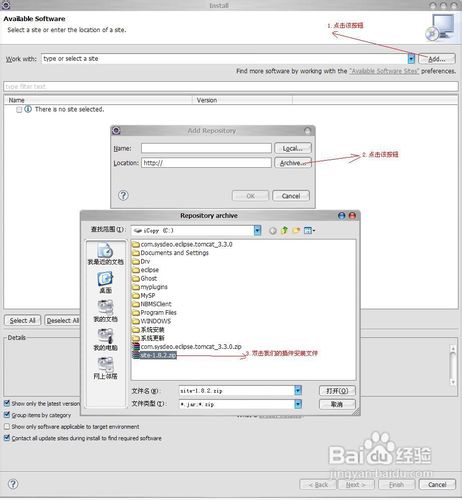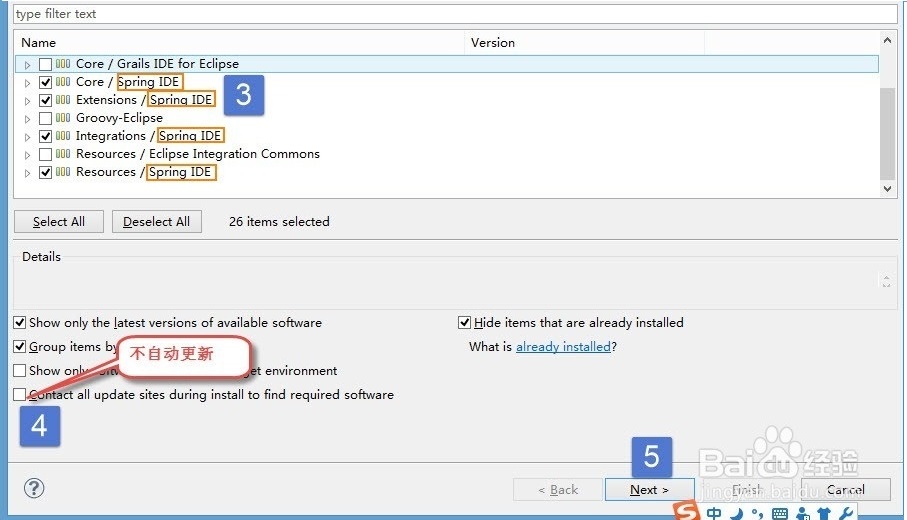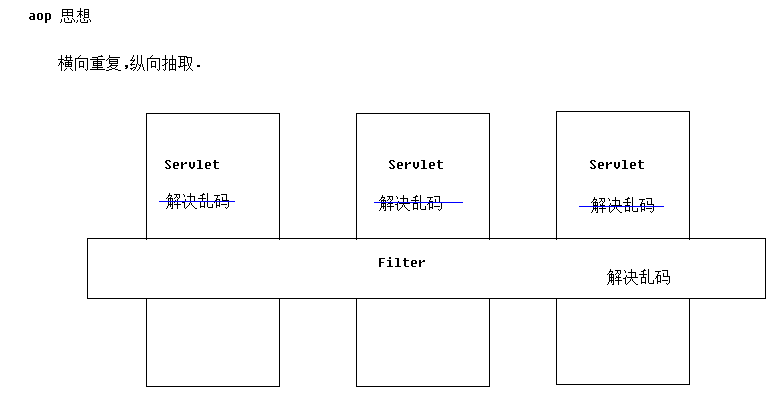一、使用注解配置spring
1.步骤
1.1 导包4+2+spring-aop
4代表:

2代表:
日志包:com.springsource.org.apache.commons.logging-1.1.1.jar
可选:com.springsource.org.apache.log4j-1.2.15.jar(老版本要导入的,导入可以保证一定能运行)
1.2 为主配置文件引入新的命名空间(约束)
1.3 开启使用注解代替配置文件
1.4 在类中使用注解完成配置
2.将对象注册到容器
//<bean name="user" class="cn.itcast.bean.User" /> //@Component("user") // @Service("user") // service层 // @Controller("user") // web层 @Repository("user")// dao层
3.修改对象的作用范围
//指定对象的作用范围 @Scope(scopeName="singleton")
4.值类型注入
通过反射的Field赋值,破坏了封装性:
@Value("tom")
private String name;
通过set方法赋值,推荐使用.:
@Value("tom")
public void setName(String name) {
this.name = name;
}
5.引用类型注入
//@Autowired //自动装配 //问题:如果匹配多个类型一致的对象.将无法选择具体注入哪一个对象. //@Qualifier("car2")//使用@Qualifier注解告诉spring容器自动装配哪个名称的对象 private Car car;
推荐方式:
@Resource(name="car")//手动注入,指定注入哪个名称的对象 private Car car;
6.初始化|销毁方法
@PostConstruct //在对象被创建后调用.init-method public void init(){ System.out.println("我是初始化方法!"); } @PreDestroy //在销毁之前调用.destory-method public void destory(){ System.out.println("我是销毁方法!"); }
二、STS插件
1.手动安装插件(成功率低)

步骤1:

步骤2:

步骤3:

2.直接使用spring装好插件的eclipse
![]()
三、spring与junit整合测试
1.导包4+2+aop+test
2.配置注解
//帮我们创建容器 @RunWith(SpringJUnit4ClassRunner.class) //指定创建容器时使用哪个配置文件 @ContextConfiguration("classpath:applicationContext.xml") public class Demo { //将名为user的对象注入到u变量中 @Resource(name="user") private User u;
3.测试
@Test public void fun1(){ System.out.println(u); }
四、spring中的aop
1.aop思想介绍



2.spring中的aop概念

3.spring实现aop的原理
3.1 动态代理(优先)
被代理对象必须要实现接口,才能产生代理对象.如果没有接口将不能使用动态代理技术
3.2 cglib代理(没有接口)
第三方代理技术,cglib代理.可以对任何类生成代理.代理的原理是对目标对象进行继承代理. 如果目标对象被final修饰.那么该类无法被cglib代理.
4.aop名词学习

五、spring中的aop演示
1.步骤(xml配置)
1.1 导包4+2
spring的aop包:
spring-aspects-4.2.4.RELEASE.jar
spring-aop-4.2.4.RELEASE.jar
spring需要第三方aop包:
com.springsource.org.aopalliance-1.0.0.jar
com.springsource.org.aspectj.weaver-1.6.8.RELEASE.jar
1.2 准备目标对象
public class UserServiceImpl implements UserService { @Override public void save() { System.out.println("保存用户!"); //int i = 1/0; } @Override public void delete() { System.out.println("删除用户!"); } @Override public void update() { System.out.println("更新用户!"); } @Override public void find() { System.out.println("查找用户!"); } }
1.3 准备通知
//通知类 public class MyAdvice { //前置通知 // |-目标方法运行之前调用 //后置通知(如果出现异常不会调用) // |-在目标方法运行之后调用 //环绕通知 // |-在目标方法之前和之后都调用 //异常拦截通知 // |-如果出现异常,就会调用 //后置通知(无论是否出现 异常都会调用) // |-在目标方法运行之后调用 //---------------------------------------------------------------- //前置通知 public void before(){ System.out.println("这是前置通知!!"); } //后置通知 public void afterReturning(){ System.out.println("这是后置通知(如果出现异常不会调用)!!"); } //环绕通知 public Object around(ProceedingJoinPoint pjp) throws Throwable { System.out.println("这是环绕通知之前的部分!!"); Object proceed = pjp.proceed();//调用目标方法 System.out.println("这是环绕通知之后的部分!!"); return proceed; } //异常通知 public void afterException(){ System.out.println("出事啦!出现异常了!!"); } //后置通知 public void after(){ System.out.println("这是后置通知(出现异常也会调用)!!"); } }
1.4 配置进行织入,将通知织入目标对象中
<?xml version="1.0" encoding="UTF-8"?> <beans xmlns:xsi="http://www.w3.org/2001/XMLSchema-instance" xmlns="http://www.springframework.org/schema/beans" xmlns:context="http://www.springframework.org/schema/context" xmlns:aop="http://www.springframework.org/schema/aop" xsi:schemaLocation="http://www.springframework.org/schema/beans http://www.springframework.org/schema/beans/spring-beans-4.2.xsd http://www.springframework.org/schema/context http://www.springframework.org/schema/context/spring-context-4.2.xsd http://www.springframework.org/schema/aop http://www.springframework.org/schema/aop/spring-aop-4.2.xsd "> <!-- 准备工作: 导入aop(约束)命名空间 --> <!-- 1.配置目标对象 --> <bean name="userService" class="cn.itcast.service.UserServiceImpl" ></bean> <!-- 2.配置通知对象 --> <bean name="myAdvice" class="cn.itcast.d_springaop.MyAdvice" ></bean> <!-- 3.配置将通知织入目标对象 --> <aop:config> <!-- 配置切入点 public void cn.itcast.service.UserServiceImpl.save() void cn.itcast.service.UserServiceImpl.save() * cn.itcast.service.UserServiceImpl.save() * cn.itcast.service.UserServiceImpl.*() * cn.itcast.service.*ServiceImpl.*(..) * cn.itcast.service..*ServiceImpl.*(..) --> <aop:pointcut expression="execution(* cn.itcast.service.*ServiceImpl.*(..))" id="pc"/> <aop:aspect ref="myAdvice" > <!-- 指定名为before方法作为前置通知 --> <aop:before method="before" pointcut-ref="pc" /> <!-- 后置 --> <aop:after-returning method="afterReturning" pointcut-ref="pc" /> <!-- 环绕通知 --> <aop:around method="around" pointcut-ref="pc" /> <!-- 异常拦截通知 --> <aop:after-throwing method="afterException" pointcut-ref="pc"/> <!-- 后置 --> <aop:after method="after" pointcut-ref="pc"/> </aop:aspect> </aop:config> </beans>
2.步骤(注解配置)
前面的1,2,3步和xml配置一样
2.4 配置进行织入,将通知织入目标对象中
applicationContext.xml:
<?xml version="1.0" encoding="UTF-8"?> <beans xmlns:xsi="http://www.w3.org/2001/XMLSchema-instance" xmlns="http://www.springframework.org/schema/beans" xmlns:context="http://www.springframework.org/schema/context" xmlns:aop="http://www.springframework.org/schema/aop" xsi:schemaLocation="http://www.springframework.org/schema/beans http://www.springframework.org/schema/beans/spring-beans-4.2.xsd http://www.springframework.org/schema/context http://www.springframework.org/schema/context/spring-context-4.2.xsd http://www.springframework.org/schema/aop http://www.springframework.org/schema/aop/spring-aop-4.2.xsd "> <!-- 准备工作: 导入aop(约束)命名空间 --> <!-- 1.配置目标对象 --> <bean name="userService" class="cn.itcast.service.UserServiceImpl" ></bean> <!-- 2.配置通知对象 --> <bean name="myAdvice" class="cn.itcast.e_annotationaop.MyAdvice" ></bean> <!-- 3.开启使用注解完成织入 --> <aop:aspectj-autoproxy></aop:aspectj-autoproxy> </beans>
通知类:
//通知类 @Aspect //表示该类是一个通知类 public class MyAdvice { @Pointcut("execution(* cn.itcast.service.*ServiceImpl.*(..))") public void pc(){} //前置通知 //指定该方法是前置通知,并制定切入点 @Before("MyAdvice.pc()") public void before(){ System.out.println("这是前置通知!!"); } //后置通知 @AfterReturning("execution(* cn.itcast.service.*ServiceImpl.*(..))") public void afterReturning(){ System.out.println("这是后置通知(如果出现异常不会调用)!!"); } //环绕通知 @Around("execution(* cn.itcast.service.*ServiceImpl.*(..))") public Object around(ProceedingJoinPoint pjp) throws Throwable { System.out.println("这是环绕通知之前的部分!!"); Object proceed = pjp.proceed();//调用目标方法 System.out.println("这是环绕通知之后的部分!!"); return proceed; } //异常通知 @AfterThrowing("execution(* cn.itcast.service.*ServiceImpl.*(..))") public void afterException(){ System.out.println("出事啦!出现异常了!!"); } //后置通知 @After("execution(* cn.itcast.service.*ServiceImpl.*(..))") public void after(){ System.out.println("这是后置通知(出现异常也会调用)!!"); } }